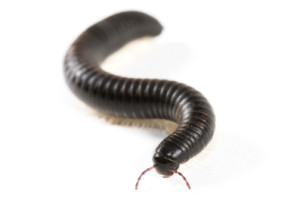
Long, segmented bodies with two pairs of legs per segment
ColorDark brown and black with color around each segment that varies from pinkish-purples to dull yellows
SizeFrom 1 – 3 inches long
HabitatDark, damp places such as under logs and dense foliage
Interesting FactsMillipedes breathe through small holes in their sides called spiracles